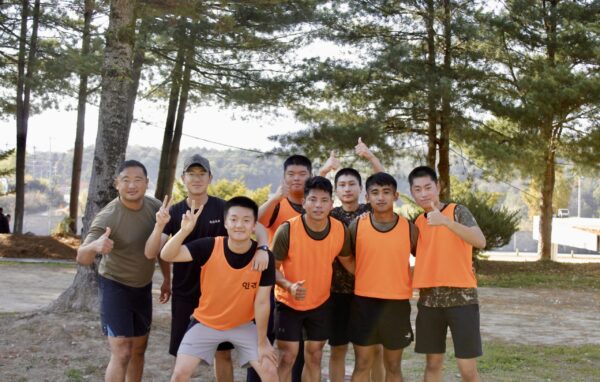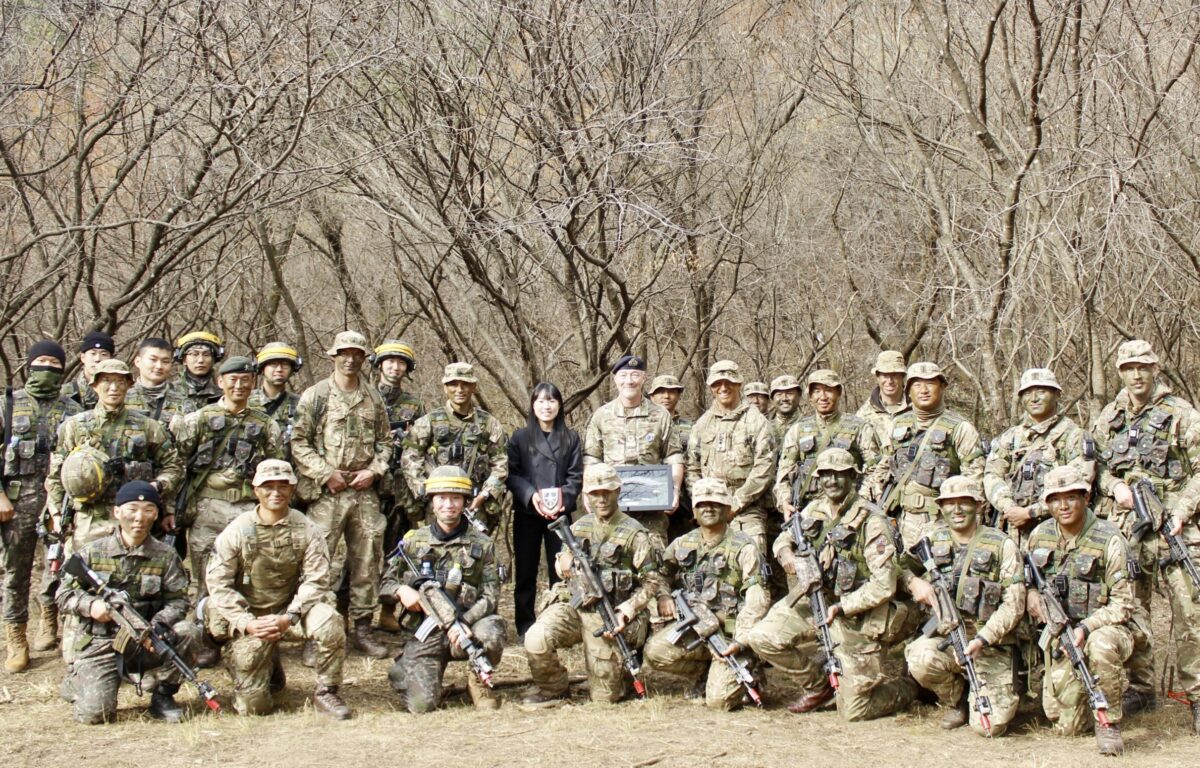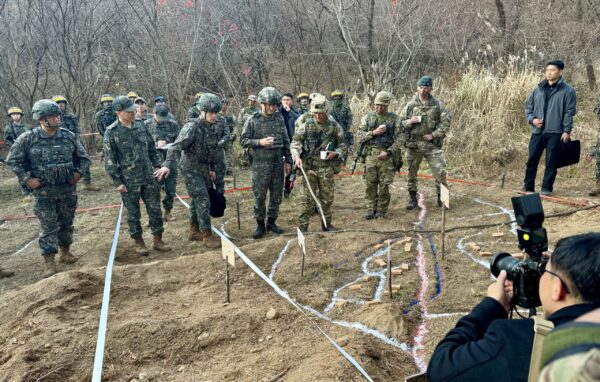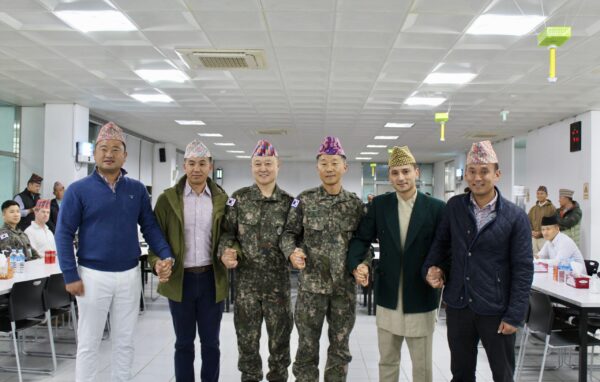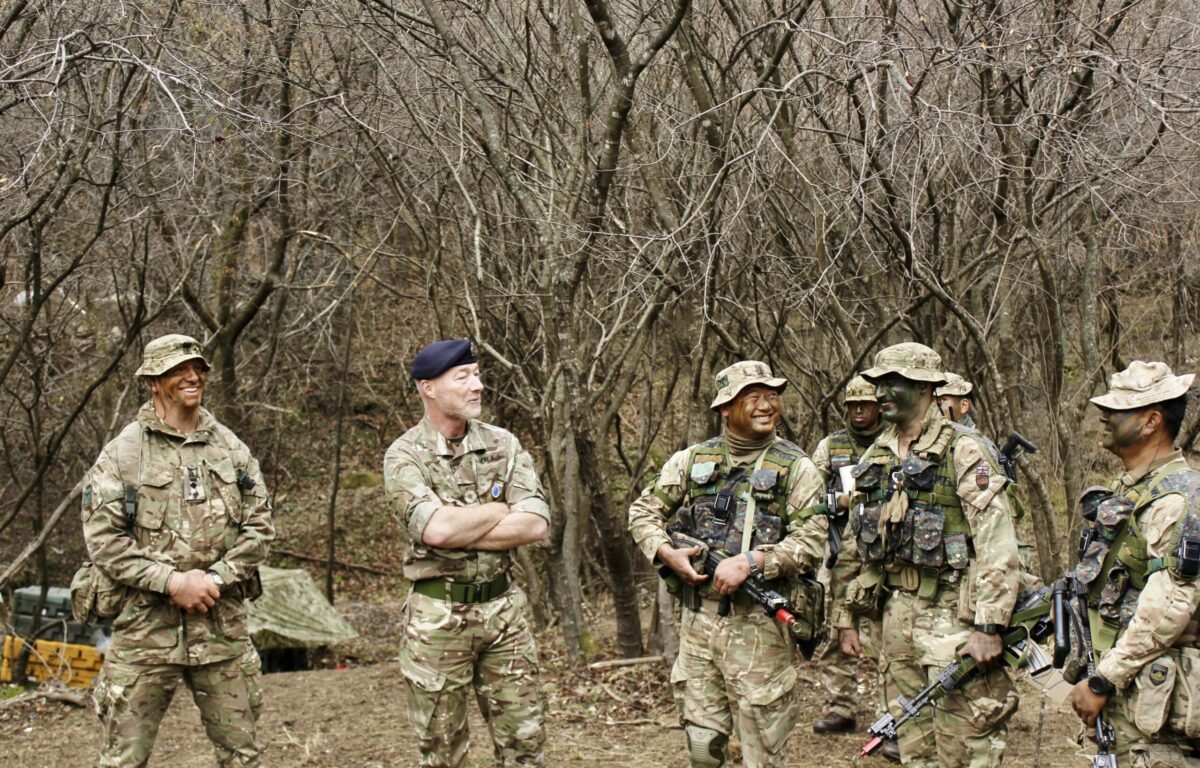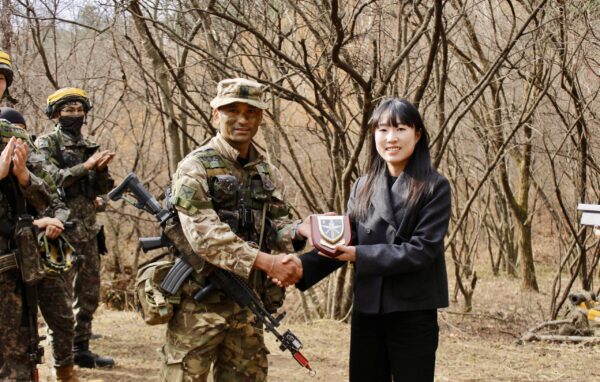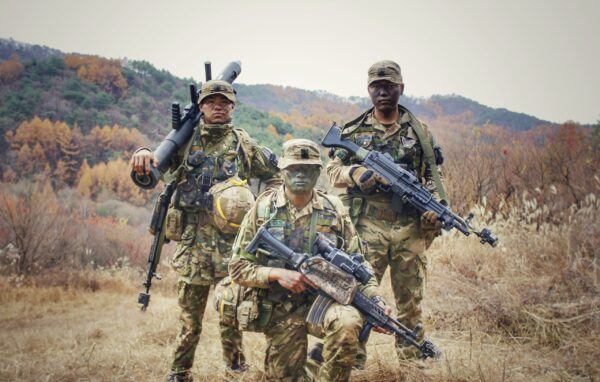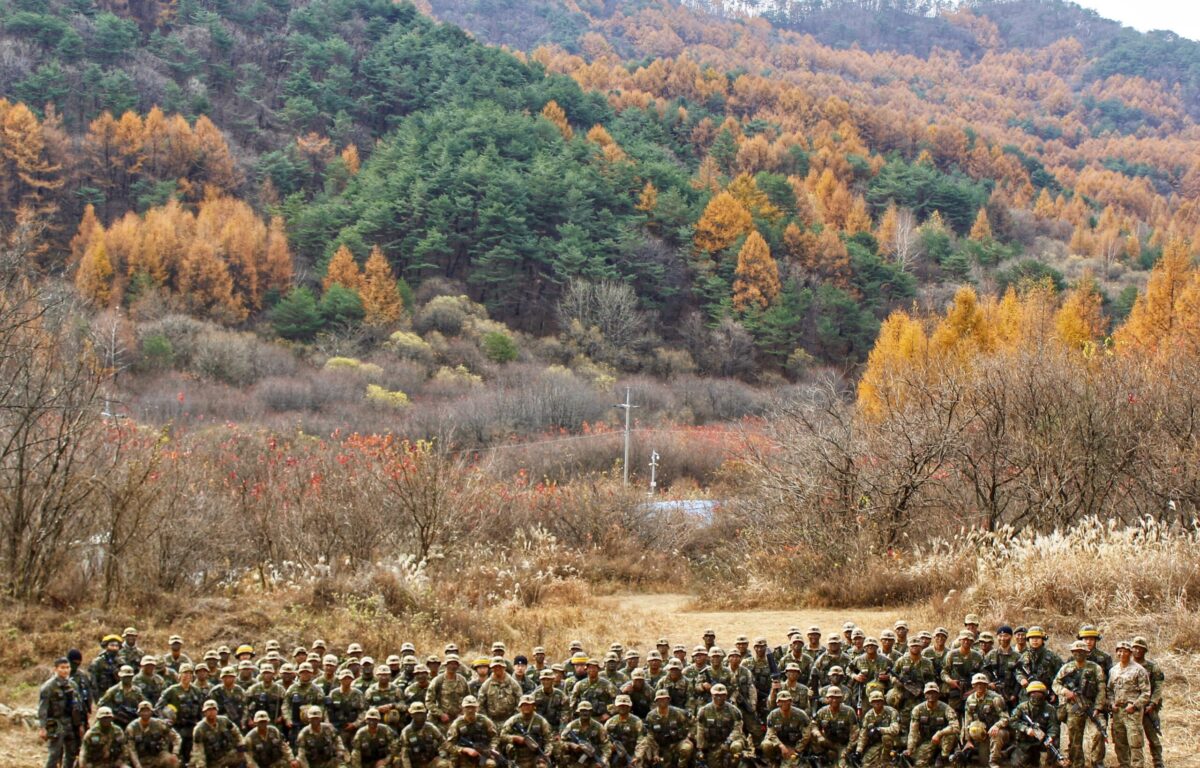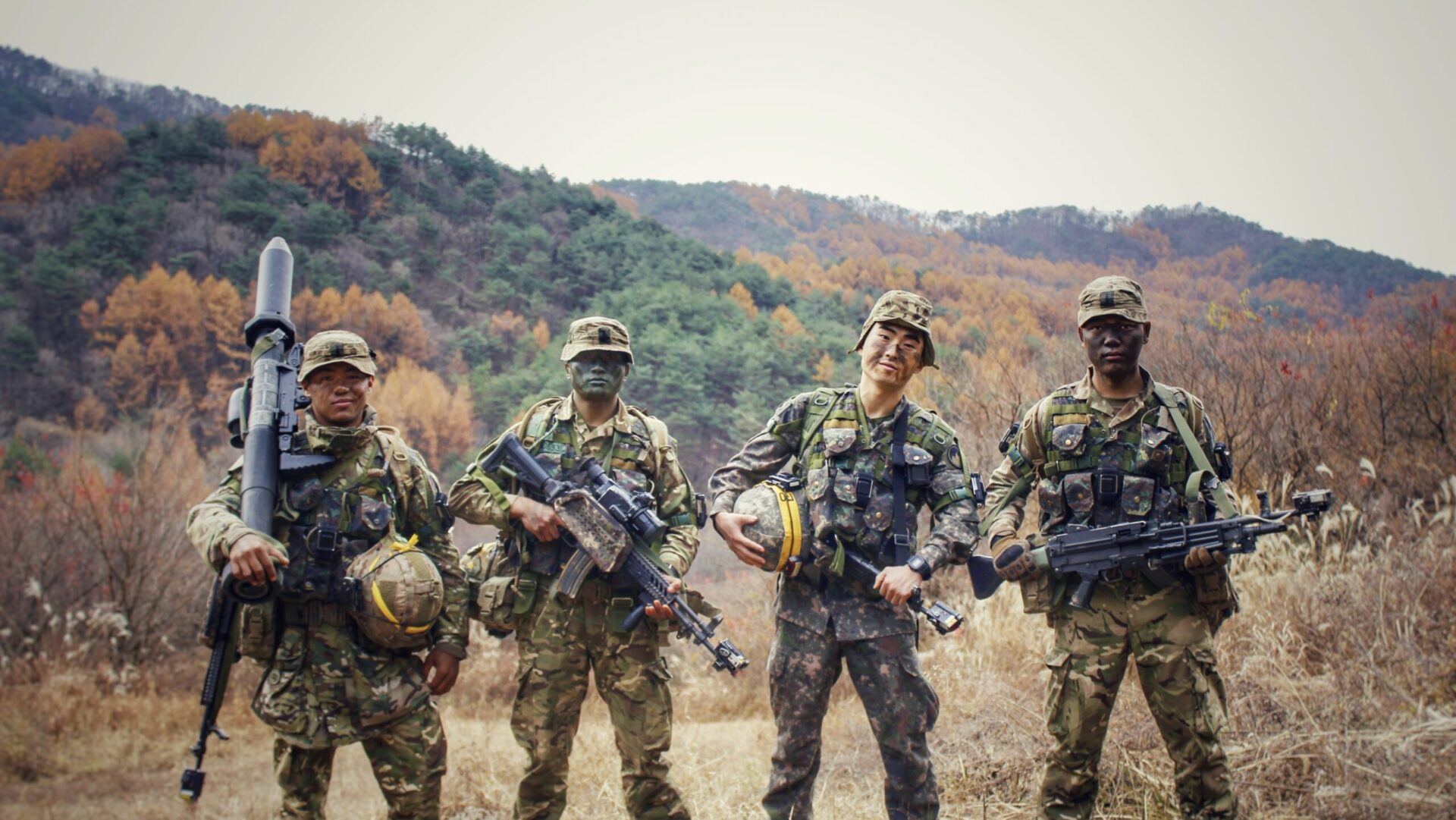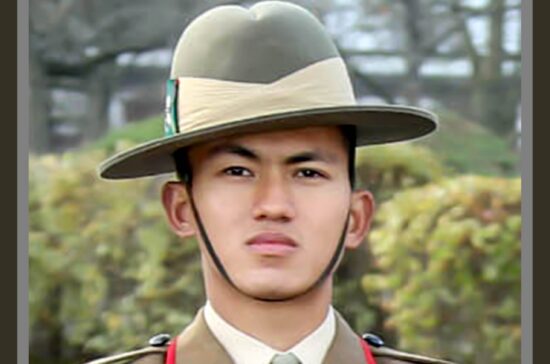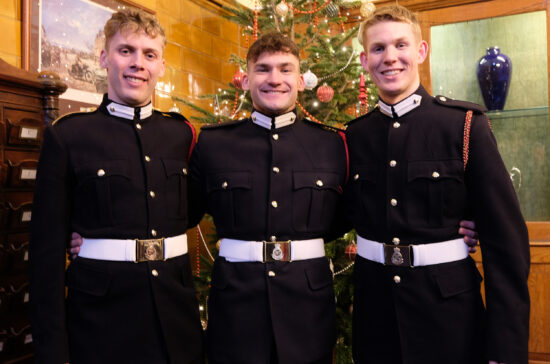Personnel from The First Battalion, The Royal Gurkha Rifles took part in Exercise IMJIN WARRIOR, a Republic of Korea Army (ROKA) exercise as part of a Brigade-level validation near the demilitarized zone (DMZ).
The 4-week deployment saw Gurkhas work and train alongside their Korean counterparts, sharing tactics, culture and language with both sides benefiting from the valuable exchanges. Commencing with an intense RSOI package, the first few days involved familiarisation of Korean weapons, vehicles, terrain and food. The Gurkhas in return were able to welcome members of the Korean 31st Brigade to a night celebrating and sharing Nepali culture, featuring food, music and a Khukuri display before enjoying traditional Tihar festivities.
The exercise consisted of two phases: 3 days offensive followed by 3 days defensive across the rugged valleys and forested mountains of the Korean Combat Training Centre. Working directly to the Brigade, C Company and attachments from Snipers, Mortars and Reconnaissance were tasked to infiltrate an objective at night and faced fierce resistance on mountain ridges. For most, the unique opportunities presented by force-on-force training taught us difficult lessons the hard-way, with every platoon suffering “casualties” from artillery and small-arms. The unit persevered, advancing with haste into the morning, eventually holding a ridge and enduring the last stand as a battalion of enemy swarmed the position. That same evening, a small team regrouped, showing aggression and coordination to “own-the-night” and defeat a significantly larger force in their own defended positions, in dense, undulating woodland.
Moving into the defensive phase, each platoon was allocated an area in which to operate, with Support Company screening for a sizeable enemy advance, laying ambushes and claymores to surprise them from the ridgeline. As night fell and the temperatures dropped to freezing, C Company dug in for a long evening of contact before a smooth withdrawal, reaching friendly forces to the rear by sunrise. The final action saw an anti-armour ambush, which saw the Company successfully protect Brigade Headquarter from a rapidly advancing column of enemy tanks. The final kill/death ratio measured around 4:1.
At the after-action review, it soon became apparent how much of a positive impact the Royal Gurkha Rifles had on 31st X operational success; this iteration of training being the first ever example of a ROKA brigade achieving any one of their objectives and destroying enemy Chain of Command; an overwhelming success for ROKA and the Gurkhas. 31st Brigade even added a Khukuri to their brigade logo in honour of our courage and valiant efforts, whilst also integrating a number of ROKA interpreters and attachments.
To finish the exercise, the team conducted a battlefield study of the Imjin River and Gloster Hill, bringing to life the proud history and scenic locations where a number of British regiments faced overwhelming Chinese Forces during the Korean war, concluded by a wreath laying ceremony, before a few days exploring and enjoying Seoul.

